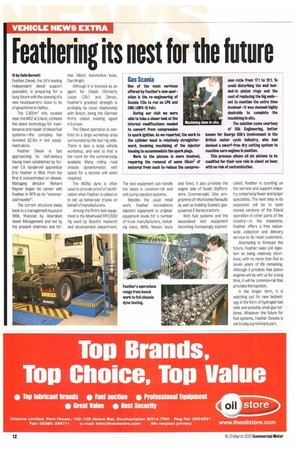Gas Scania
Page 14

If you've noticed an error in this article please click here to report it so we can fix it.
One of the main services offered by Feather's new operation Is the re-engineering of Scania 113s to run on LPG and ONG (0,8-15 Feb).
During our visit we were able to take a closer look at the internal modifications needed to convert from compression to spark ignition. As we reported, the work to the cylinder head is relatively straightforward, involving machining of the injector housing to accommodate the spark plugs.
Work to the pistons is more involved, requiring the removal of some 50cm3 of material from each to reduce the compres sion ratio from 17:1 to 12:1. To avoid disturbing the well bedded-in piston rings and the cost of replacing the big ends— not to mention the extra time involved—it was deemed highly desirable to complete the machining in situ.
The solution came courtesy of Silk Engineering, better known for George Silk's involvement in the British motor cycle industry, who had devised a swarf-free dry cutting system to machine mire engines in position.
This process allows all six pistons to be modified for their new role in about an hour, with no risk of contamination.












































































































